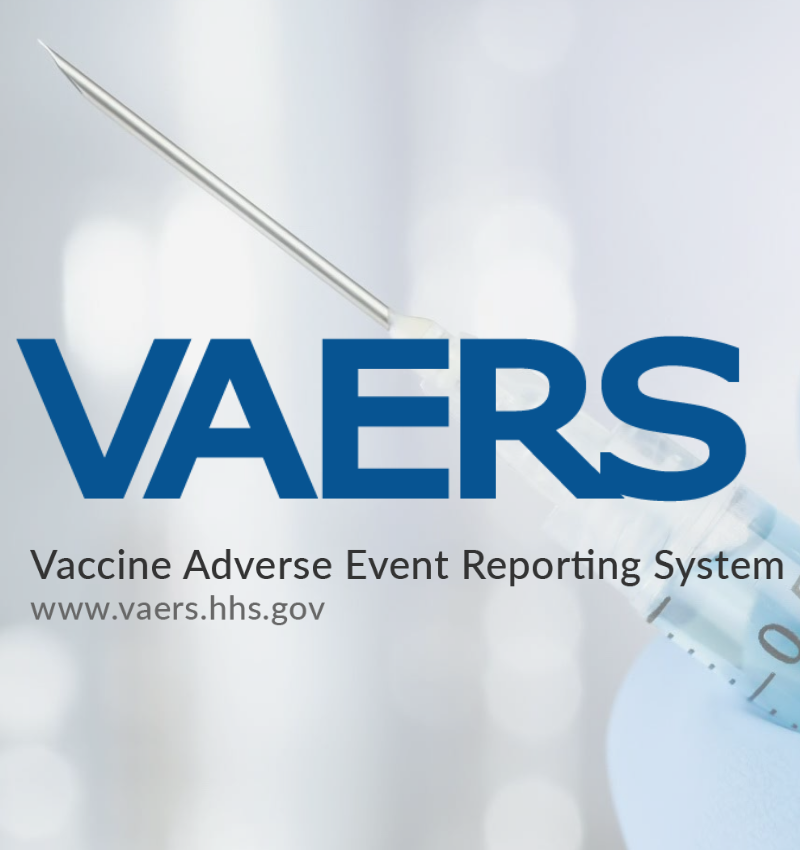mRNA Covid Vaccines and Clinical Trials – Flaws and Impacts

The first vaccines for SARS COV-2 were authorized for use under Emergency Use Authorization (EUA) by the FDA in December, 2020.
According to the FDA, they may temporarily authorize the use of unapproved products if the Secretary of Health and Human Services (HHS) determines that a qualifying emergency exists that can cause a serious or life-threatening disease and that the authorized product is believed to treat or prevent the disease.
The HHS must also establish that the potential benefits outweigh the known and potential risks; and that there are no approved, adequate, and available treatment alternatives. Products authorized by an EUA may be marketed and used for the authorized use while the emergency persists unless FDA revokes the EUA.
Since Covid-19 emerged a highly contagious, novel respiratory virus, with no established treatment, and became a pandemic “emergency” situation, the procedure to develop and introduce a new vaccine was expedited.
Typically, traditional vaccines follow established guidelines and take 10-15 years to complete and establish safety and efficacy.
Moderna and Pfizer, two of the three companies who used mRNA technology to make their vaccines, developed, tested, received EUA, and began administering all within one year.
How did these manufactures produce the COVID-19 vaccines so quickly? First, messenger mRNA technology is not new. In fact, genetic therapies using both mRNA as well as DNA have been under development since the 1990s, but were discovered thirty years before, in the early 1960s. However, specific guidelines for mRNA vaccine development have not been established.
The road to our current Covid-19 mRNA inoculations, however, was long. mRNA and DNA challenges, and limitations resulted in decades of scientific study, billions invested, and many failures.
DNA vaccines were the first genetic vaccines to be considered for infectious disease indications as early as the 1990s. In 1990, University of Pennsylvania scientist Katalin Karikó proposed using mRNA as an alternative to DNA-based gene therapy. She reasoned that since mRNA is a temporary fix, it would alleviate some of the long-term safety concerns with DNA therapy, which effects are permanent.
DNA vaccines were defined as “purified plasmid preparations containing one or more DNA sequences capable of inducing and/or promoting an immune response against a pathogen.”
Since DNA technology was being considered and studied for potential vaccine development, the World Health Organization (WHO) produced guidelines for DNA vaccine development (appendix).
The FDA also released a document , Guidance for Industry Considerations for Plasmid DNA Vaccines for Infectious Disease Indications in which they encourage animal testing for DNA vaccines and that manufacturers should assess whether modulation of human immune system will result in adverse consequences, such as chronic inflammation, autoimmunity or immunopathology.“
DNA technology was considered superior because it would cause a permanent change, whereas mRNA was a temporary solution. But mRNA was turning out to be a difficult technology.
Several pharmaceutical companies were having issues getting the mRNA into cells without triggering side effects. Scientists could isolate only small amounts of the material, which was unstable and destroyed easily. Immune reactions to mRNA injections in animals suggested this option wasn’t as safe as scientist Karikó had hoped.
It wasn’t until scientists discovered that by adding nano-lipid particles to the mRNA, they could successfully deliver them into cells. This opened the door to a variety of applications and prompted companies to invest in developing products.
Founded in 2012, Moderna was especially excited about the prospects of mRNA technology. Stephen Hoge, the president of Moderna, stated in an interview that “You could ultimately use mRNA to express any protein and perhaps treat almost any disease…Its almost limitless what it can do.”
Moderna secured billions to fund their investments into this new technology from the U.S. government and the Bill & Melinda Gates Foundation. Originally the funding was for mRNA vaccine programs for diseases caused by viruses like Zika and HIV.
As previously mentioned, vaccines historically go through a lengthy process before finally approved by the FDA. In a 2014 PubMed article, “mRNA vaccine delivery using lipid nanoparticles”, the authors state that the major advantage of using mRNA vaccines over DNA vaccines is regulatory in nature, which “eases the requirements for preclinical and toxicological studies”.
It is interesting to note, that one of the authors of this article is Robert Langer, a co-founder and member of the board of directors of Moderna therapeutics.
On Dec. 2020, the WHO released a document, Evaluation of the quality, safety and efficacy of RNA-based prophylactic vaccines for infectious diseases: regulatory considerations that stated “Although there are recent publications that have discussed some of the safety, production, and regulatory issues associated with this new technology , as of December 2020, there is no formal regulatory guidance specifically for mRNA-based vaccines”.
The WHO gives this explanation for not having set guidelines: “Because detailed information on the methods for production and control for safe, efficacious mRNA-based vaccines is not yet standardized, and for candidate vaccines certain details remain proprietary and thus not publicly available, it is not feasible to set specific international guidelines at this time”.
Since billions were invested in mRNA vaccines and they were developed without specific regulations or guidelines at “warp speed”, it is important to look at the safety, efficacy and methods used that resulted in EUA as well as a concerted effort by the current administration to try to impose vaccine mandates.
The Canadian Covid Care Alliance (CCCA) reviewed the Pfizer mRNA vaccine trial in particular and produced a compelling video (and PDF) identifying flaws and missing data, which they say resulted in a vaccine that does “More Harm than Good”.
To watch the full video, click here. To read Pfizer’s clinical trial, which is public information, click here.
As noted, Pfizer is one of two US manufactures that developed Covid-19 inoculations using mRNA technology. They released results of their Phase 1 clinical trial in November of 2020. The results were then published in the New England Journal of Medicine, which was used to achieve the consequential FDA approval under the FDA’s Emergency Use Authorization (EUA).
This was a historic event and achievement, but was it based on infallible information?
When medical students graduate form medical school they recite the Hippocratic Oath, in which one of the statements is “first, do no harm”. This is a premise from which any company developing a medical or health intervention should abide by.
Governments too, have the responsibility to protect the health of their citizens. When a medical intervention is approved by a regulatory agency like the FDA, it must be proven safe. To prove safety, best evidence, determined through rigorous scientific research and established guidelines, should be the required standard. Randomized controlled trials are currently considered the gold standard trial when proving something is safe.
The Covid-19 vaccine clinical trials were used as the evidence to prove safety and efficacy. Since the results of these trials led to FDA’s EUA, which subsequently led to millions being taking the Covid-19 vaccines, it is critical to understand the trial design, the data, and the consequences.
PFIZER’S CLINICAL TRIAL
The CCCA did a thorough job identifying missing data and insufficient methods in Pfizer’s trial – pointing out that the trial results do not explicitly prove evidence of safety.
Following are some of the concerns that the CCCA addresses in their video, and the supportive data and tables taken directly from Pfizer’s study and report.
The first issue relates to Pfizer’s efficacy claims and how their results were calculated.
Pfizer’s phase 1 clinical trial lasted only 2 months. The trial included a total of 43,548 participants, of whom 43,448 received injections: 21,720 received the BNT162 inoculation and 21,728 were given a placebo. The original trial report was published in New England Journal of Medicine on December 10, 2020.
Pfizer claims in their original trial report, dated December 3, 2020, that the inoculations were safe and showed 95%, efficacy 7 days after the 2nd dose. This 95% refers to Relative Risk Reduction (RRR), not Absolute Risk Reduction (ARR), which was only 0.84%. This 95% number does not tell you the vaccine protects you 95% of the time. The ARR is what you need to tell you what your overall risk that is reduced by vaccination. The difference is how the number is calculated.
- In the trial 8 out 18,198 people who were vaccinated got Covid-19, and 162 out of 18,325 unvaccinated got Covid-19. The risk even without the vaccine was low. Overall risk in the unvaccinated group is 0.88%, in the vaccinated group the risk is reduced to 0.04%. The ARR, or net benefit from the vaccine is the difference between 0.88% and 0.04, or 0.84%. The RRR is the relative difference between 0.88% and 0.04%. The FDA recommends using Absolute Risk Reduction. RRR is a misleading number. So, by their own numbers, the vaccine offers a less than 1% benefit.
- In an article published in the Europe PMC, “Reporting absolute risk reduction measures is essential to prevent outcome reporting bias in evaluation of COVID-19 vaccine efficacy”.
- The Pfizer study did not go to their plan. The study was supposed to go on for 3 years, ending in 2023. However, after only 2 months of collecting trial data, the study was unblinded and the placebo group was offered the vaccine. Most of them got it and moved over to the inoculated group, thus removing the control group and unblinding the study. And therefore, after this point, there is no way to assess long term effectiveness or safety of the vaccine.
Misleading demographics– Trial Participants
Pfizer states that their primary objective of the trial is “To describe the safety and tolerability profiles of prophylactic BNT162 vaccines in healthy adults after 1 or 2 doses”.
When looking at the trial participants, they were generally healthy people. Only 4% were over the age of 75 and only 21% of them had one or more comorbidities. It is important to note that of the people who actually died with covid, 95% had at least one comorbidity, (the average was 4), and over 85% were over the age of 75.
The trial did not include people who would benefit from the treatment the most, the elderly and people with co-morbidities.
When the Covid-19 vaccines were approved under the EUA, however, the first people to be receive them were the elderly and the sickest.
The trial also excluded people with allergies, pregnant women, breastfeeding woman, people with bleeding disorders, immunocompromised people, and people who had previously tested positive for covid. In fact, two steps listed in Pfizer’s screening of study participants, were to perform urine pregnancy test (if appropriate) and to confirm the use of contraceptives (if appropriate).
The inoculation was never tested on these groups, yet they were not excluded from mandates, nor were they given informed consent about the possible risks.
Third– Pfizer’s Timeline.
According to the history of vaccines, vaccine development is a long complex process that
As mentioned earlier, vaccine development can take 10-15 years. FDA guidelines for traditional vaccines encourage animal studies, and then 3 phases of human and safety testing. Pfizer’s development and testing for their mRNA vaccine was completed in 1 year.
Pfizer began their study in October 2020, as a randomized control trial, with 2 groups, one who were given the vaccine, and the other group, the control group took a placebo. It was an observer-blind trial, meaning that the participants did not know which group they were in, but the trial inspectors did.
The blind trial was supposed to go on until 2023. However, instead after only 2 months they unblinded the participants and everyone in the trial was offered the vaccine. Most of the placebo group decided to take it and moved over to the inoculated group.
At this point there was no longer a control group, and therefore no evidence of true effectiveness, or safety could be provided. Animal studies were skipped, and combined phase 2 and 3 into 6 months.
Phase II 6-month report data
After 6 months of data collected in the un-blinded trial, Pfizer’s released their 6-month report on September 15, 2021. The results were published in the New England Journal of Medicine NEJM on November 4, 2021. Pfizer indicated an efficacy of 91.3 % – meaning a reduction in positive cases compared to the placebo group. However, it is important to note that the report also showed an increase in illnesses and deaths in the vaccinated group.
Fourth – Adverse Events – in the supplemental appendix of trial.
Below is a screenshot from Pfizer’s Supplementary Appendix showing Adverse Events. Table S3 -Participants Reporting at Least 1 Adverse Event from Dose 1 to 1 Month After Dose 2 During the

This table shows the inoculations actually increase illness. Over 5000 people who had received the vaccine had Adverse Events that were related to the inoculation.
It also shows severe adverse events are 75% more likely in the vaccinated group. This is evidence of harm that the vaccine increases illnesses rather than decrease it. This information fails to prove that their vaccine is safe.
DEATHS

This table shows that there were more deaths in the inoculated group than in the placebo group – 15 vs 14. The kinds of deaths are concerning. There were twice as many cardiovascular deaths in inoculated arms than in the placebo group.
In the 6-month report, an additional 3 more participants in the inoculated group and 2 in the original placebo group, who then received the vaccine after unblinding, died. So that makes the total 20 deaths in the inoculated group.
Pfizer states in their report that “None of these deaths were considered to be related to BNT162b2 by the investigators” however, unless they provide more information on the cause of death, there is no way to know the accuracy of this statement, and therefore the safety.
Limited and Inadequate control groups
Pfizer’s trial consisted of only 2 groups – the unexposed and uninoculated, and the unexposed and inoculated. People who were previously exposed to Covid-19 were not included in the study.
Since Pfizer omitted people who had recovered from Covid-19 and had natural immunity. So, there is no evidence to prove that it is safe for these people to take the vaccines, or even how effective the inoculation would be for these groups.
Data comparing natural immunity to immunity provided from the vaccine would have been another control group that should have been studied. The fact that this information was not included may suggest that Pfizer was not confident in what the results would be.
LOW quality safety science because they did not track pre-clinical safety biomarkers
Pfizer tested antibodies and tracked for adverse events post inoculation. However, they never looked at pre-clinical biomarkers (labs) to determine any pre-symptom adverse events. They could have looked at early warning indicators, with a few lab markers prior and post inoculation, but they didn’t. The only blood test they did was one to test antibodies prior to inoculation.
In order to make sure that the vaccine does not cause harm, the study should have focused on all-cause mortality and illness. Instead, the objective of the study was to determine if people who took the vaccine test positive less than people who don’t. In other words, the study does not show evidence that there is less illness and death in people who have taken the vaccine. In fact, as noted earlier, there are more illnesses and deaths among the vaccinated group than in the unvaccinated control group. They also should have done more long-term safety studies to provide more data on how the vaccines impacted long term health as well.
Spread reduction and transmission not included
Pfizer did not include the objective of spread reduction or transmission in their trial. Since this wasn’t studied, they cannot claim that the vaccine has the capability of reducing spread or transmission. It is possible that the vaccine actually increases transmission.
Prior to entering the trial, the investigators were given the option to test participants based on symptoms, which means many asymptomatic people may have been entered into the study. Subsequently, subjectively was introduced into the study. This is unscientific and unethical.
Missing data
There were 8 confirmed Covid-19 cases after 2 months in the inoculated group and 162 in the placebo or uninoculated group. This is a small number of cases, especially considering that after the 2 months, study the investigators lost touch with 80 participants in the inoculated group and 86 in the placebo group.
They also had 1,594 suspected cases in the inoculated group and 1,816 in the uninoculated group – but they never tested these people for COVID-19. Had they tested them, and they were all positive, the results could have been very different – and not in their favor. The relative risk reduction would have been a lot lower (19%) and they needed a 55% RRR to be eligible for the FDA’s Emergency Use Authorization.
A whistleblower at Ventavia, the research company in charge of Pfizer’s clinical trial confirmed this, telling the British Medical Journal (BMJ) that Ventavia didn’t have enough people to collect swab samples from trial participants who had reported symptoms that were consistent with COVID-19. Because the trial’s endpoint was to identify laboratory-confirmed symptomatic COVID-19, these revelations suggest the data could have been skewed by samples not being collected from participants who had had COVID-like symptoms.
Children
Pfizer’s clinical trial for children was very small, not large enough to gather sufficient data. Only 1005 were inoculated vs 978 placebo group. Since COVID-19 does not pose a significant risk to children it is important to be sure that the inoculation poses less risk. In fact, children without serious medical condition have almost a 0% chance of dying from Covid-19.
As in the adult study, “children with no or stable preexisting conditions were eligible to participate, except those with an immunocompromising or immunodeficiency disorder, those with a history of MIS-C, or those receiving immunosuppressive therapy (including cytotoxic agents and systemic glucocorticoids)”. In addition, in the Phase 1 study, children who had previous Covid-19 diagnosis were excluded. Therefore, the safety and efficacy of the vaccine has not been established in these groups.
When asked whether more information is needed to justify mandates in children aged 5-11, William Moss, Executive Director, International Vaccine Access Center at John Hopkins University responded that the trials for children 5 to 11 years of age were small, had a very short follow up, and that the FDA requires longer follow-up studies before considering full final approval. He also noted that the trial was not large enough to access the risk of myocarditis and pericarditis that had been observed in young men after receiving mRNA vaccines.
Even though the trial was small, there was at least 1 serious adverse event. A 12-year-old, Maddie de Garay was hospitalized within 24 hours. She was on a feeding tube, wheelchair bound. Pfizer described the adverse event as “Functional Abdominal Pain.” To hear Maddie’s story watch Senator Ron Johnson’s expert panel on federal vaccine mandates.
In the 5–11-year-olds, Pfizer acknowledged that the inoculation could cause myocarditis. Myocarditis weakens the heart and causes blood clots. There is also a 20% mortality rate after 6 years. This poses an unacceptable risk for children.
Medical interventions like vaccinations must be proven safe before administering to the general public. However, the Covid-19 vaccines are being tested on children to prove their safety.
Neither Pfizer nor the FDA investigated the claims made about Ventavia (the company who conducted the trial) after a whistle blower from that company pointed out the flaws in the trial. See article in the British Medical Journal.
Passive surveillance (VAERS)
The Vaccine Adverse Event Reporting System (VAERS) is a passive reporting system, meaning it relies on individuals or doctors to report adverse events. Anyone can submit a report to VAERS, including patients, parents, and healthcare providers. Doctors are required by law and expected to complete lengthy and involved forms – which may hinder reporting.
As of May 27, 2022 a quick search of VAERS data using the medalergs.org showed an astounding 1,259,063 adverse events of which 235,041 were serious, and there were 28,532 deaths reported.
Potential for adverse events in ovaries as evident in Pfizer’s organ distribution table.
This tables shows concentration of Pfizer vaccine by organ.

Study now being conducted COVID-19 Vaccine and Ovarian Reserve – Full Text View – ClinicalTrials.gov
Conflicts of interest
- Of the 32 authors of the Pfizer report, 84% had a conflict of interest. Two of the authors were founders of BioTech, a company whose stock value increased by 9 Billion dollars.
- Media – Pfizer advertises and sponsors programs on mainstream media channels.
- Indemnified – Pfizer, Moderna and other vaccine manufacturers are shielded from monetary liability for any adverse events.
CCCA concluded their presentation by stating their position that the inoculations should be withdrawn. Their argument is compelling.
Unfortunately, only time will tell of the full health ramifications of these vaccinations. The risks particularly appear to outweigh benefits to children and adolescents.
COVID-19 variants, and new coronaviruses will continue to impact the world, and may be with us indefinitely. They also bring new challenges and opportunities to pharmaceutical companies to produce new mRNA vaccines. Before this new mRNA technology is used again, any and all development plus clinical trials should include more control groups, be randomized for a longer period, and include in-depth follow-ups on study participants for the long-term.
It took decades for the scientific and pharmaceutical industries to get this new technology ready to implement in a pandemic situation. The WHO and the FDA must now take the time to create more rigorous guidelines for the development and trials of any future mRNA vaccines.
Scientists and medical professionals have the great responsibility of ensuring the health of our public. Any scientific and technological inventions and advancements like mRNA technology that have significant potential to save lives are to be commended, however, like any new health intervention, the benefits should outweigh the risks and those risks must always be provided with informed consent.
_____________________________________________________________________________
If you experience a side effect after receiving a vaccine, be sure to inform your medical professional and encourage them to report on VAERS, the Vaccine Adverse Event Reporting System here.
Links to Pfizer trial Pfizer trial
Vaccine listed ingredients
The Pfizer-BioNTech COVID-19 Vaccine includes the following ingredients:
mRNA, lipids ((4-hydroxybutyl)azanediyl)bis(hexane-6,1-diyl)bis(2-hexyldecanoate), 2 [(polyethylene glycol)-2000]-N,N-ditetradecylacetamide, 1,2-Distearoyl-sn-glycero-3- phosphocholine, and cholesterol), potassium chloride, monobasic potassium phosphate, sodium chloride, dibasic sodium phosphate dihydrate, and sucrose
The Moderna COVID-19 Vaccine contains the following ingredients:
Messenger ribonucleic acid (mRNA), lipids (SM-102, polyethylene glycol [PEG] 2000 dimyristoyl glycerol [DMG], cholesterol, and 1,2-distearoyl-sn-glycero-3-phosphocholine [DSPC]), tromethamine, tromethamine hydrochloride, acetic acid, sodium acetate, and sucrose.
The Janssen (Johnson & Johnson) COVID-19 Vaccine includes the following ingredients:
Recombinant, replication-incompetent adenovirus type 26 expressing the SARS-CoV-2 spike protein, citric acid monohydrate, trisodium citrate dihydrate, ethanol, 2-hydroxypropyl-β-cyclodextrin (HBCD), polysorbate-80, sodium chloride.
REFERENCES:
- COVID-19 Vaccines | FDA
- https://www.canadiancovidcarealliance.org/wp-content/uploads/2021/12/The-COVID-19-Inoculations-More-Harm-Than-Good-REV-Dec-16-2021.pdf
- The randomized clinical trial: an unbeatable standard in clinical research?
- Can mRNA disrupt the drug industry?
- Polyethylene glycol (PEG) is a cause of anaphylaxis to the Pfizer/BioNTech mRNA COVID‐19 vaccine
- PEGylated DNA/transferrin-PEI complexes: reduced interaction with blood components, extended circulation in blood and potential for systemic gene delivery – PubMed (nih.gov)
- mRNA Vaccine Era—Mechanisms, Drug Platform and Clinical Prospection
- https://cen.acs.org/business/start-ups/mRNA-disrupt-drug-industry/96/i35
- Why are we vaccinating children against COVID-19?
- 12 Covid-19: Researcher blows the whistle on data integrity issues in Pfizer’s vaccine trial
- Outcome Reporting Bias in COVID-19 mRNA Vaccine Clinical Trials.
- Developing mRNA-vaccine technologies
- Ensuring the Safety of Vaccines in the United States
- Delivery of mRNA Therapeutics for the Treatment of Hepatic Diseases
- Establishing Preferred Product Characterization for the Evaluation of RNA Vaccine Antigens
- Guidelines for assuring the quality and nonclinical safety evaluation of DNA vaccines
- Guidelines for assuring the quality, safety, and efficacy of DNA vaccines Proposed revision of Annex 1 of WHO Technical Report Series, No. 941
- Guidance for Industry Considerations for Plasmid DNA Vaccines for Infectious Disease Indications
- mRNA Vaccine Delivery Using Lipid Nanoparticles
- Evaluation of the quality, safety and efficacy of RNA-based prophylactic vaccines for infectious diseases: regulatory considerations
- Myocarditis after BNT162b2 Vaccination in Israeli Adolescents
- Myocarditis after BNT162b2 mRNA Vaccine against Covid-19 in Israel
- Pre-Licensure Vaccine Safety
- Covid-19: Researcher blows the whistle on data integrity issues in Pfizer’s vaccine trial
- Lavishly funded Moderna hits safety problems in bold bid to revolutionize medicine
- Nearly 35,000 Reports of COVID Vaccine Injuries Among 5- to 17-Year-Olds, CDC Data Show
- Pfizer-BioNTech COVID-19 Vaccine ingredients
- SARS-CoV-2 vaccine-associated-tinnitus: A review – PubMed (nih.gov) (add in content) Adverse events section
- Covid-19: Researcher blows the whistle on data integrity issues in Pfizer’s vaccine trial
- Company That Managed Pfizer Vaccine Trial Sites ‘Falsified Data’: Whistleblower
- mRNA vaccine delivery using lipid nanoparticles
- Diverse Applications of Nanomedicine
- Dendrimers and Polymer Drugs Conjugate Market Global Size, 2019 Sales, Recent Trends, Demand, Industry Revenue Analysis by Starpharma Holdings Ltd., AstraZeneca Plc., Eli Lilly & Co., Nektar Therapeutics etc. | Medgadget
- The Development of mRNA Vaccines for Infectious Diseases: Recent Updates (includes information on dendrimers)
- Dendrimer-RNA nanoparticles generate protective immunity against lethal Ebola, H1N1 influenza, and Toxoplasma gondii challenges with a single dos






